The all-new XPeng P7 is a liftback sedan from 2035 for just $30,700
globalchinaev
• Aug 28 • 6 min read
On August 27, XPeng (NYSE:XPEV) officially debuted the completely revamped P7 fastback sedan, more than four years after the original P7 launched.
The all-new P7 reflects XPeng’s push to revive its once best-selling EV and cement its product line around AI‑defined new energy vehicles with in-house Turing chips.
Advertisement – Continue scrolling for more
Four variants are offered. The base P7 702 is priced at 219,800 yuan (c. $30,700), while the P7 820 costs 239,800 yuan (c. $33,500).
Two dual‑motor 750 models are available: the base P7 750 at 259,800 yuan (c. $36,300) and a 750 Scissor Doors at 301,800 yuan (c. $42,200).
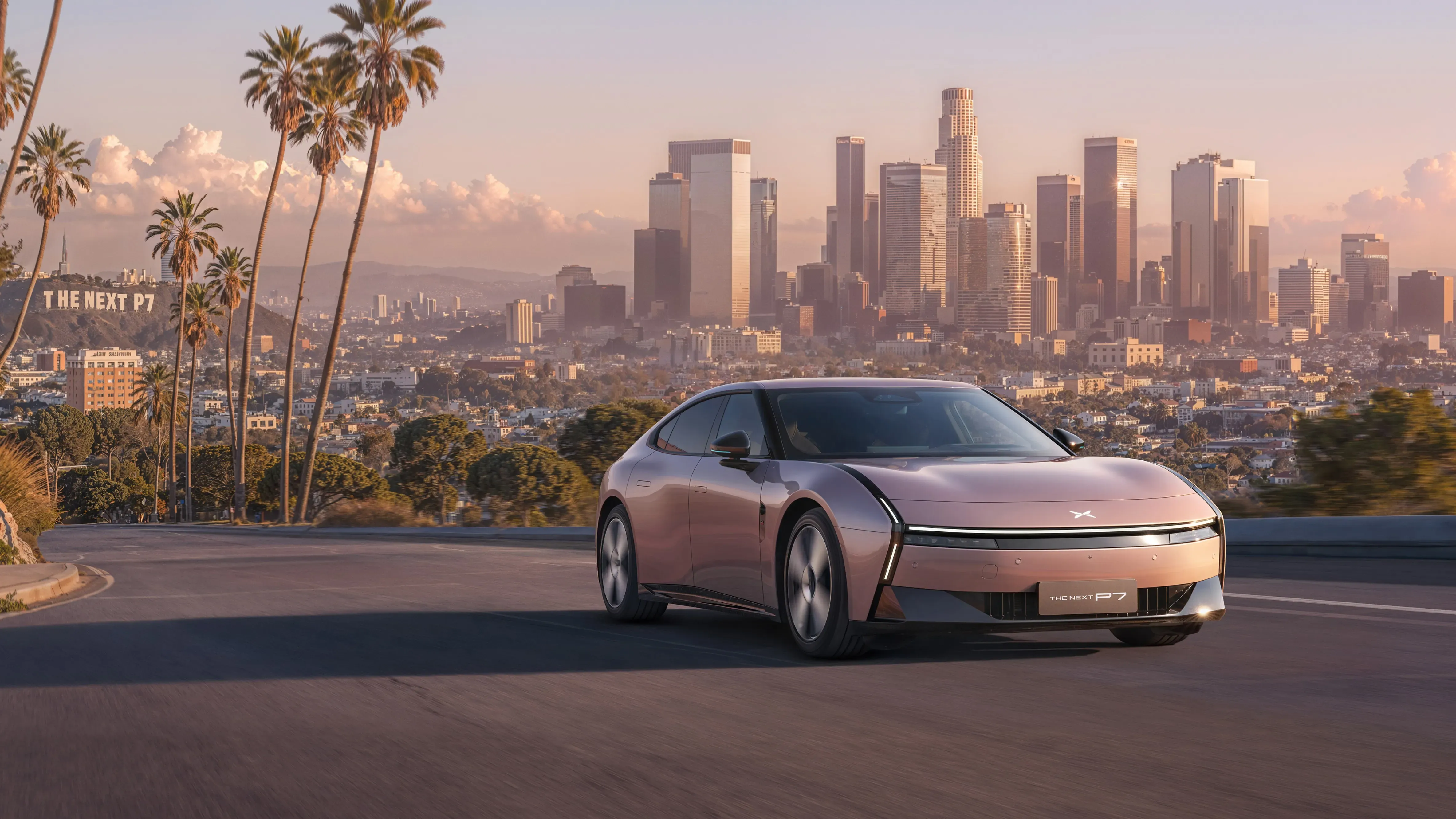
All versions share the 800‑V SiC powertrain, 5C super‑charging battery and comprehensive driver‑assistance hardware. Fast‑charging times from 10 % to 80 % state of charge range from roughly 11.3 to 12 minutes.
Compared with its predecessor, the redesigned P7 is larger and lower. The body measures 5,017 mm in length, 1,970 mm in width and 1,427 mm in height with a 3,008 mm wheelbase.
Advertisement – Continue scrolling for more
XPeng highlights its length‑to‑height ratio of 3.57 and width‑to‑height ratio of 1.40 to convey a wide‑body stance.
The exterior front design features a new XMART FACE that includes a through-type light bar, light wings running through each sides, hidden LED matrix headlights, hidden millimeter-wave radar, and integrated illuminated XPeng logo.
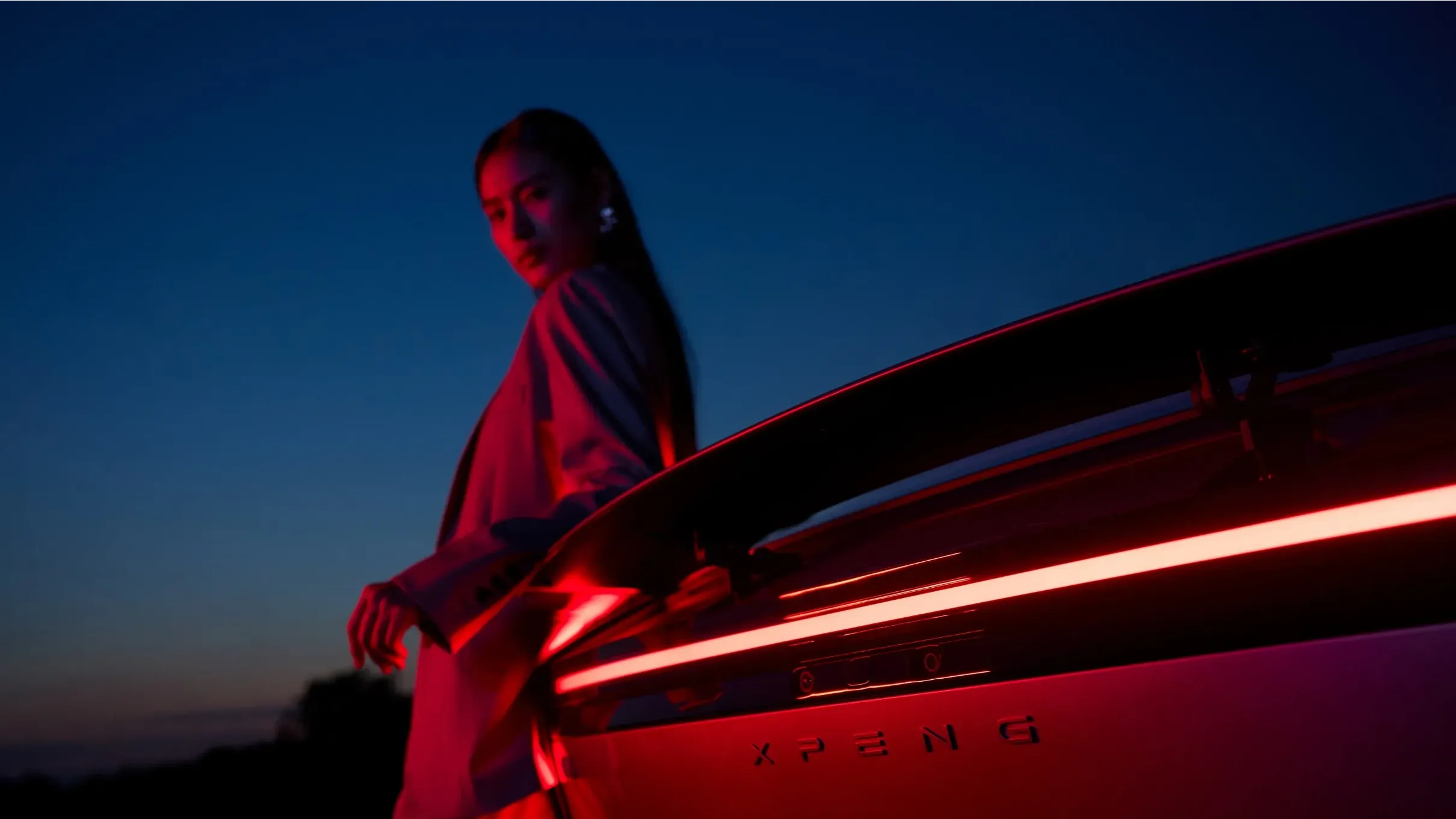
Source: XPeng
Aerodynamic elements include a floating license‑plate holder and an active front air‑intake grille, as well as an electrically actuated rear spoiler.
XPeng claims the car achieves a drag coefficient of 0.201 after more than 25 aerodynamic optimizations, adding over 90 km of driving range.
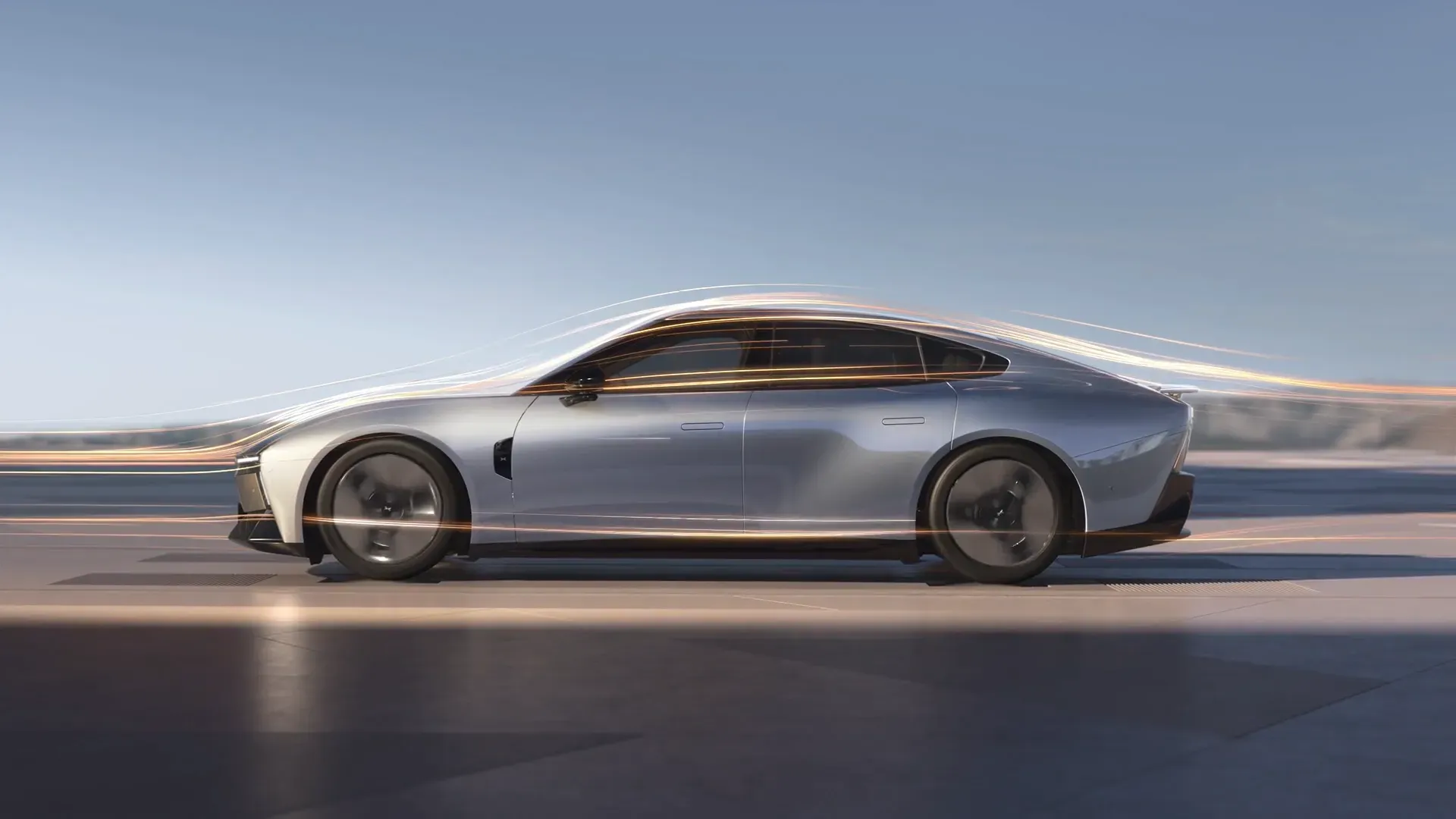
Source: XPeng
Wheel options range from 20‑inch low‑drag wheels to 21‑inch forged wheels, and the exterior colour palette ranges from matte silver, green, yellow, purple, silver, gray, and blue. Four interior colours are offered: purple, gray, white, and black.
Inside, the cabin is conceived as an “intelligent cockpit.” A “technology island” dashboard houses an 87‑inch augmented‑reality head‑up display that projects navigation, driving and suspension information onto the windscreen.
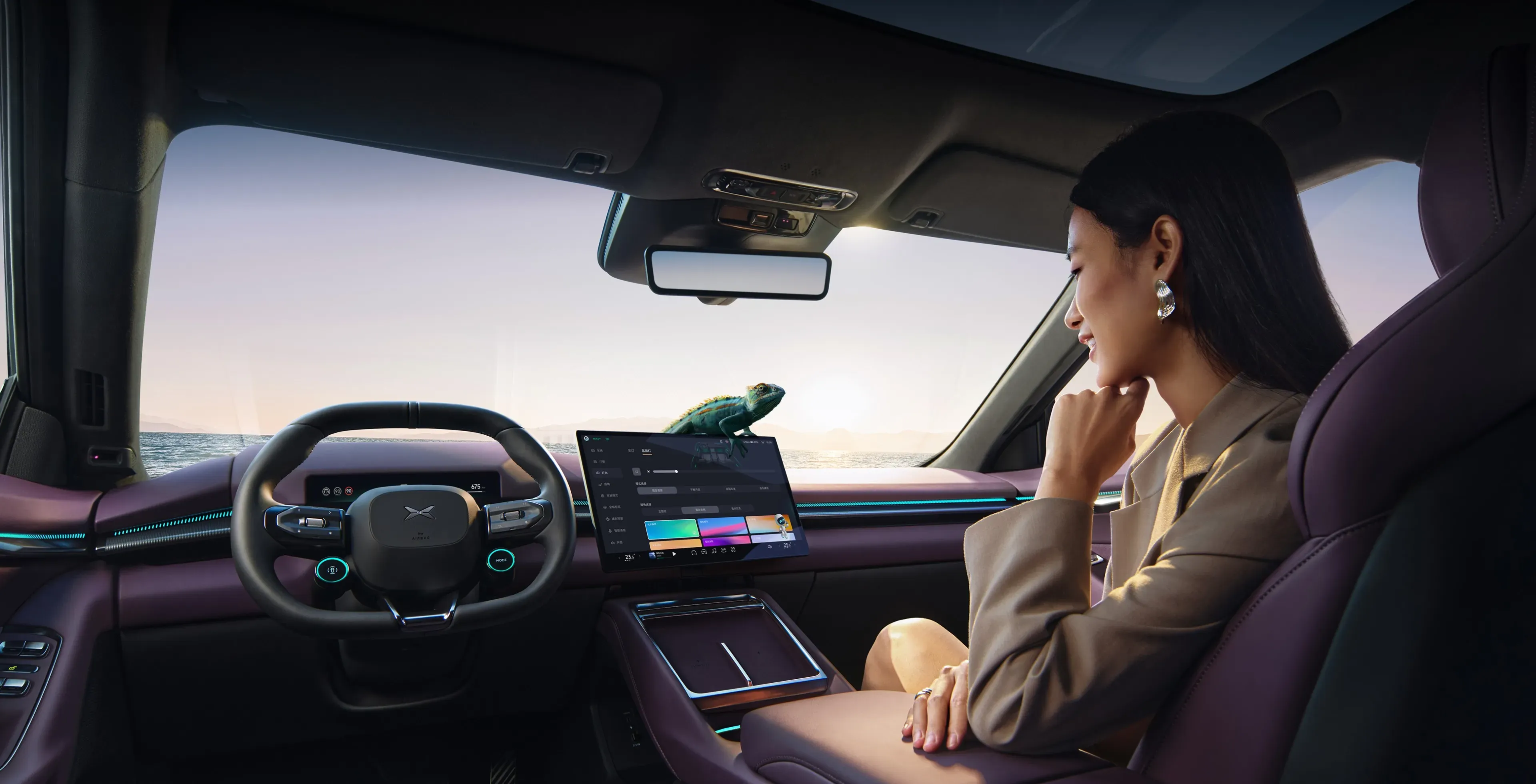
Source: XPeng
The driver faces an 8.8‑inch instrument cluster, while a 15.6‑inch central display mounted on a three‑axis bracket tilts and rotates between –15° and +10°.
Touch pads on the door panels allow custom control functions, and the three‑spoke steering wheel integrates left‑ and right‑handed rotary controls for adjusting driver‑assistance systems and activating boost or track modes.
Advertisement – Continue scrolling for more
Sport seats trimmed in Nappa leather and Dinamica microfibre provide active side bolsters and extendable thigh support.
The 1.84m² panoramic glass roof uses a triple silver coating to block 99.99 % of ultraviolet and 99.58 % of infrared radiation.
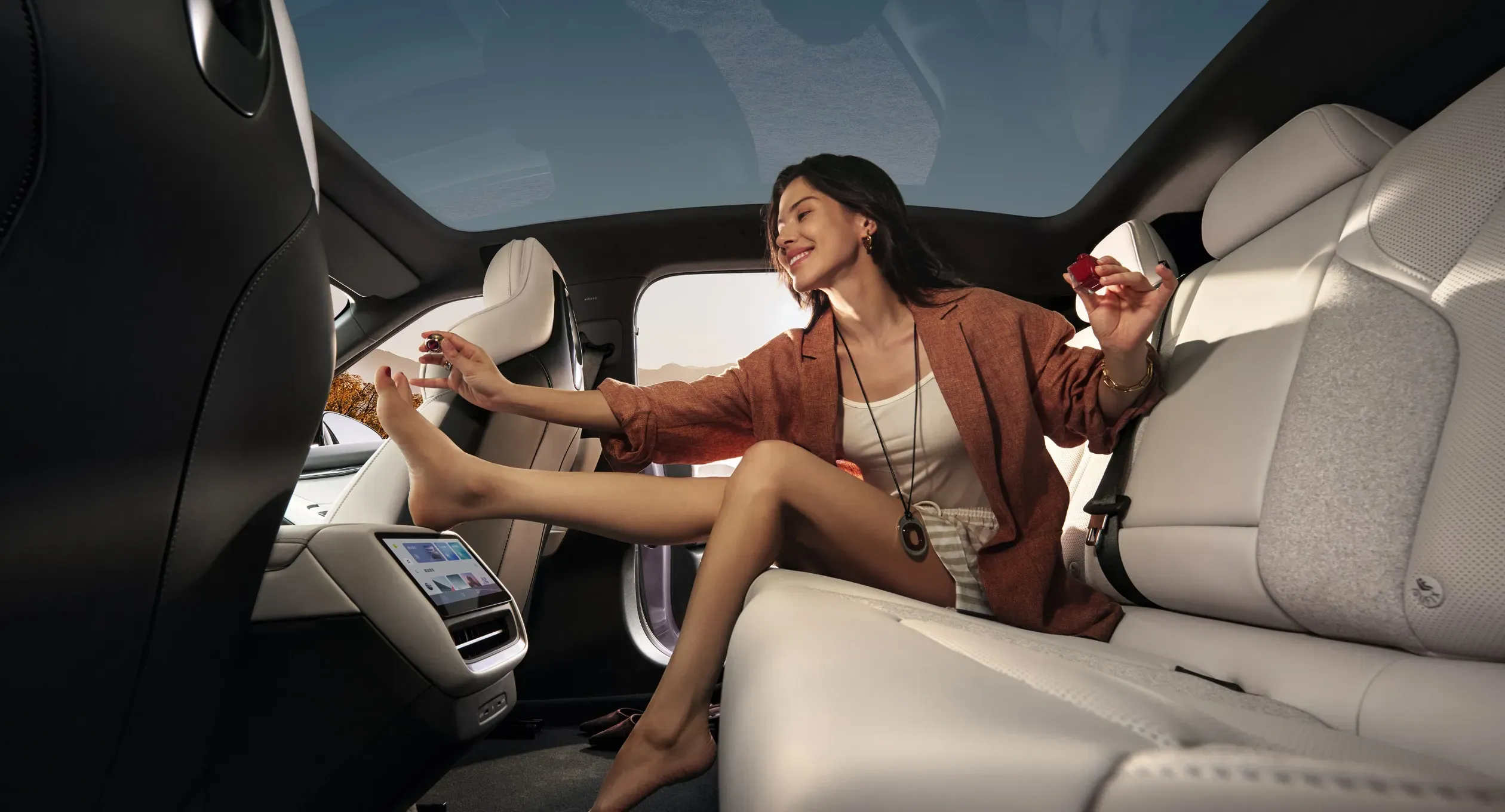
Source: XPeng
Rear passengers are given an 8‑inch entertainment display and lounge‑like seating with 120 mm of knee room and a 30° seat‑back angle.
A 23‑speaker sound system with a 7.1.4 layout and AI‑assisted immersive audio complements a fragrance system offering three bespoke scents.
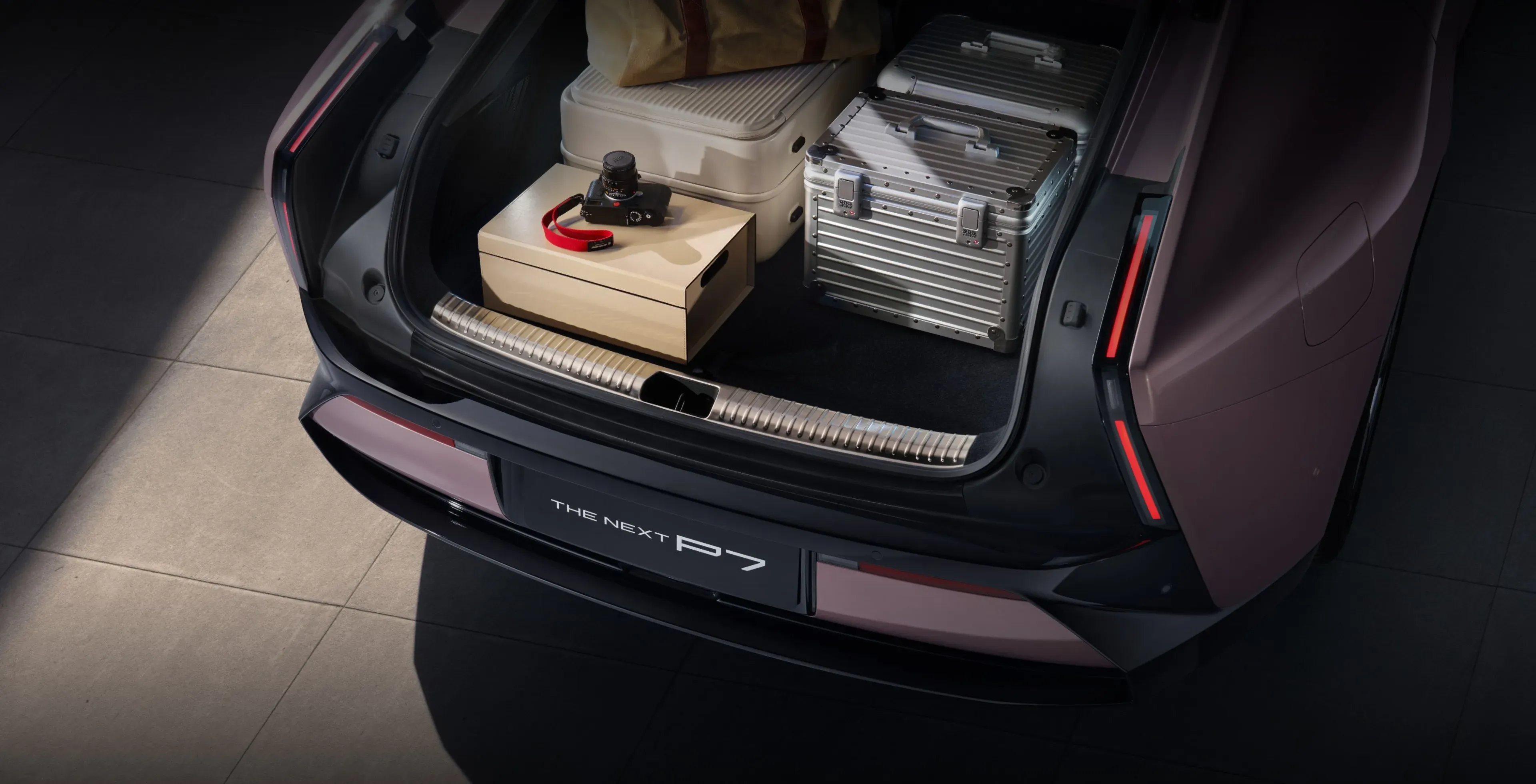
Source: XPeng
Storage includes a 575‑litre rear trunk, a 56‑litre front boot and up to 1,929 litres when the rear seats are folded.
The cockpit’s electronics are driven by three XPeng Turing AI chips that deliver 2,250 TOPS of effective computing power.
Advertisement – Continue scrolling for more
XPeng’s VLA‑OL (Vision-Language-Action — Online Learning) large model governs driving assistance, enabling assisted driving, parking‑to‑parking navigation and reinforcement learning for human–machine co‑driving.
The VLM (Vision-Language Model) large model manages the smart cabin through an OMS (Occupant Monitoring System) interior sensing system, a virtual cabin butler and 360° exterior voice control.
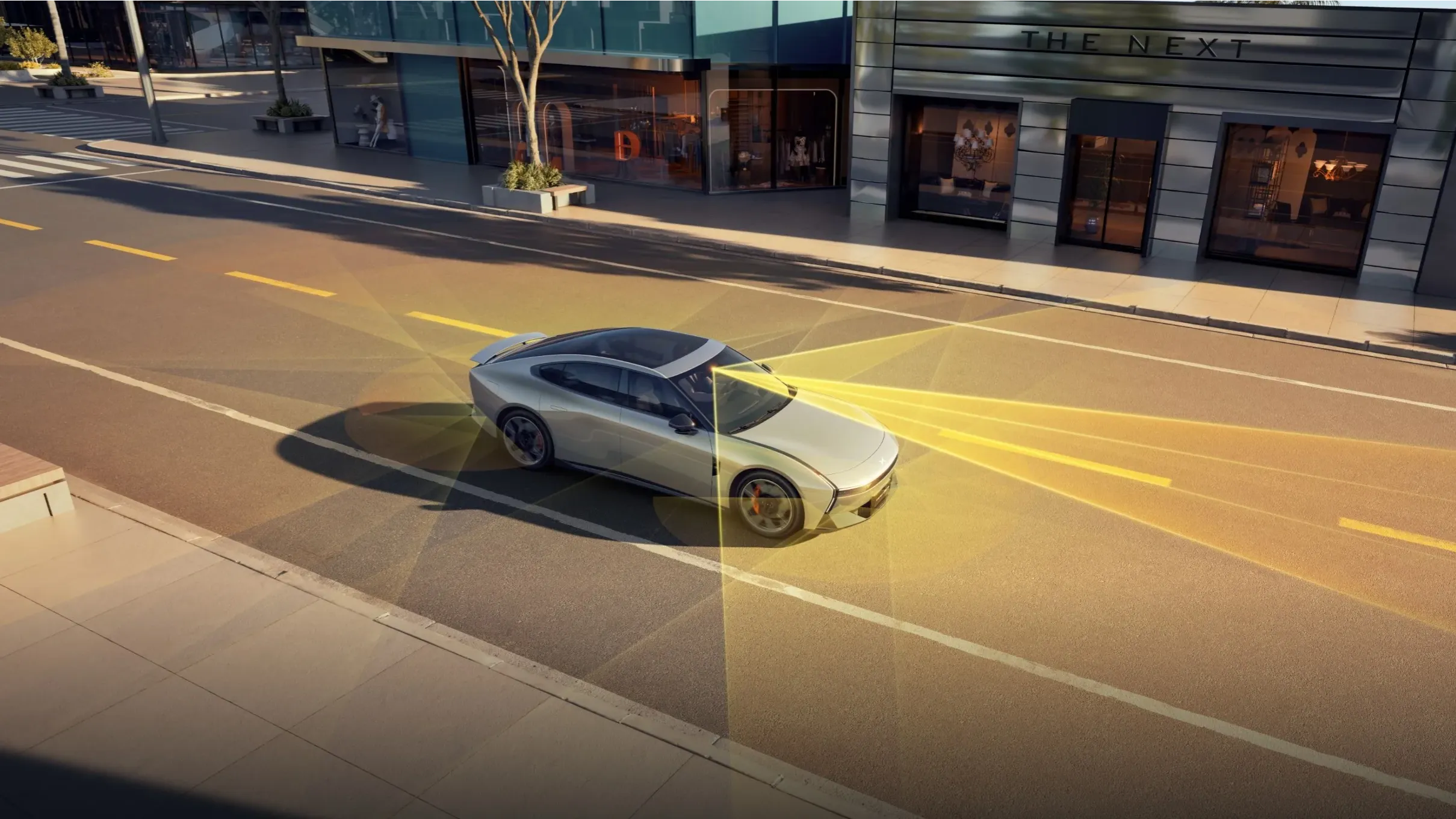
Source: XPeng
The system supports ADAS at speeds from 0 to 130 km/h and offers AR‑based “road‑rage relief” by projecting playful emojis when traffic is stressful.
Outside the car, voice commands can open the tailgate, unlock the front boot or initiate parking.
Advertisement – Continue scrolling for more
The redesigned P7 uses an 800‑V high‑voltage platform and a 5C super‑charging AI battery. XPeng claims a CLTC range of 820 km (about 510 miles) for the ultra‑long‑range variant and 702 km (about 436 miles) for the base long‑range model.
The high‑performance dual‑motor model offers 750 km of range (about 466 miles) and accelerates from 0 to 100 km/h in 3.7 seconds.
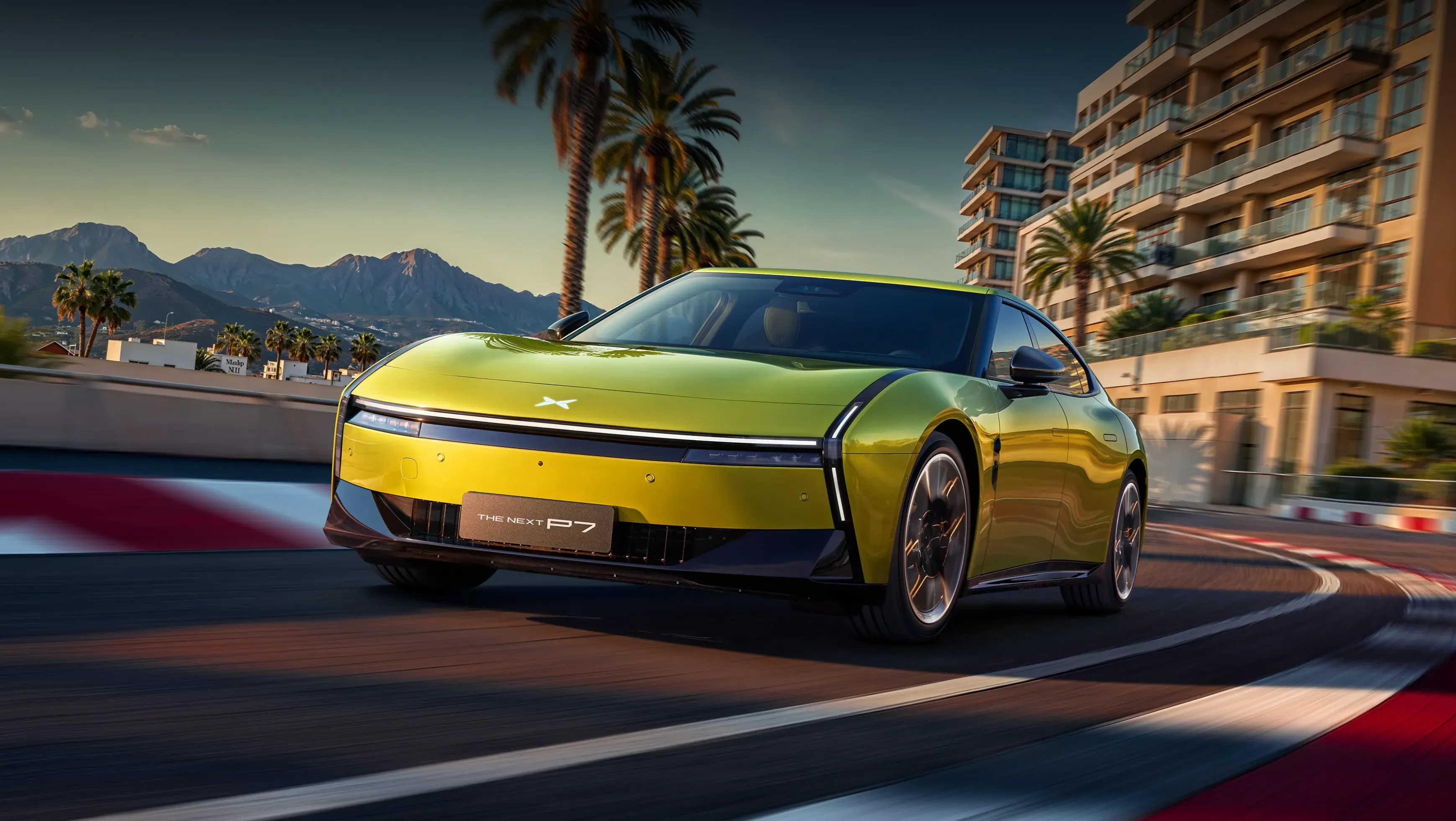
Source: XPeng
The base and ultra‑long‑range versions use a single mid‑mounted motor and sprint to 100 km/h in 5.8 s and 5.4 s respectively. Top speed is rated at 230 km/h, and maximum output reaches 437 kW (593 hp) with 695 Nm of torque in the dual‑motor variants.
Brembo four‑piston front calipers and dual‑chamber air suspension with height and stiffness adjustment are fitted across the range.
Advertisement – Continue scrolling for more
XPeng’s X‑HP 3.0 thermal management uses heat pumps to stabilize battery temperatures. According to the company, a 10‑minute fast charge adds 525 km (about 326 miles) of range and peak charging rates can replenish roughly one kilometer per second.
A 24‑hour endurance test witnessed by China Automotive Technology and Research Centre recorded a distance of 3,961 km.
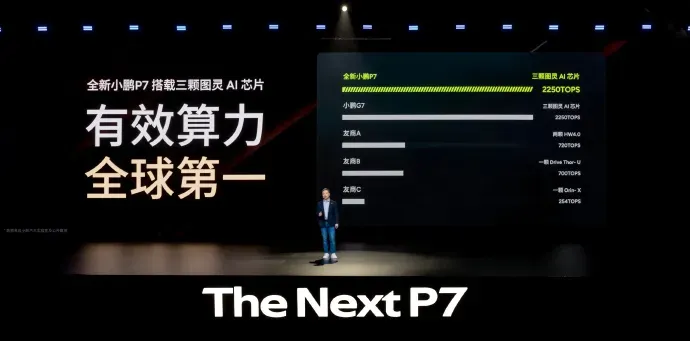
Source: XPeng
Hardware for driver assistance includes three Turing AI chips for a total computing power of 2,250 TOPS, leading all EVs like the Model Y on Hardware 4.0 with 720 TOPS. The car is also equipped with millimeter‑wave and ultrasonic radars, high‑definition cameras, a driver‑monitoring camera and high‑precision positioning units.
The system supports end‑to‑end full‑scenario autonomy with lane‑keeping, automatic lane change, smart speed assistance and remote parking functions.
Advertisement – Continue scrolling for more
Safety engineering centers around a 16,000‑tonne front‑ and rear‑integrated aluminum casting and a steel‑aluminum mixed cage structure.
Seven airbags are standard, including a central airbag to mitigate far‑side impacts. The redesigned P7 is engineered to meet C‑NCAP five‑star and China Insurance Automotive Safety Index “3G+” standards, and its AEB and emergency‑evasion systems operate at speeds up to 130 km/h.
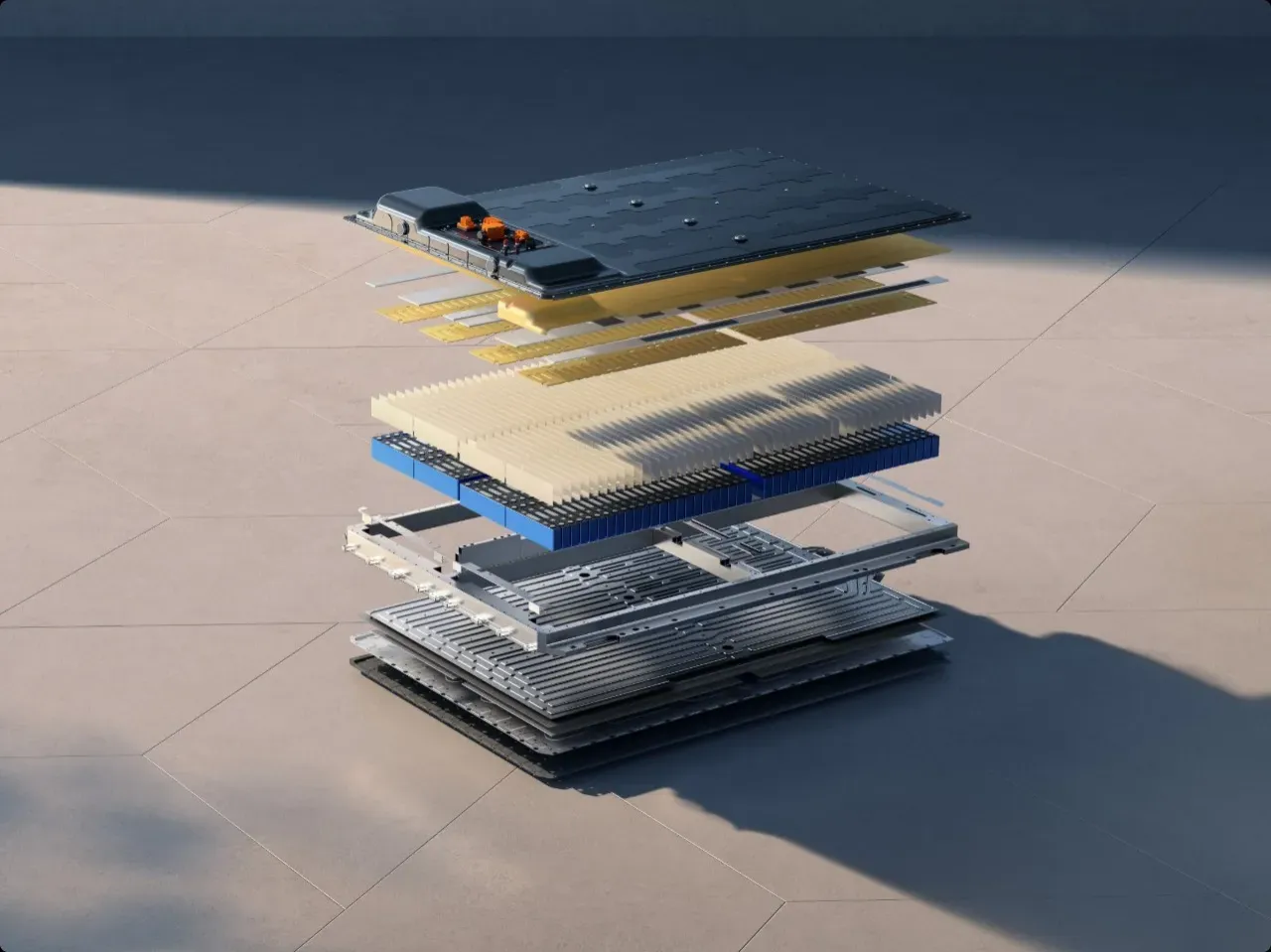
Source: XPeng
The AI battery doctor provides 24/7 cloud‑based monitoring and 14 pre‑diagnostic strategies. XPeng also claims the battery’s bottom impact resistance and post‑impact insulation exceed new national standards by factors of 4.67 and 5 respectively.
XPeng positions the redesigned P7 as a flagship in its AI‑first portfolio alongside the G6 and G9 SUVs. Its combination of long range, rapid charging, high‑performance variants and an AI‑heavy cockpit is designed to challenge premium electric sedans like Tesla’s Model 3 and Xiaomi’s SU7.